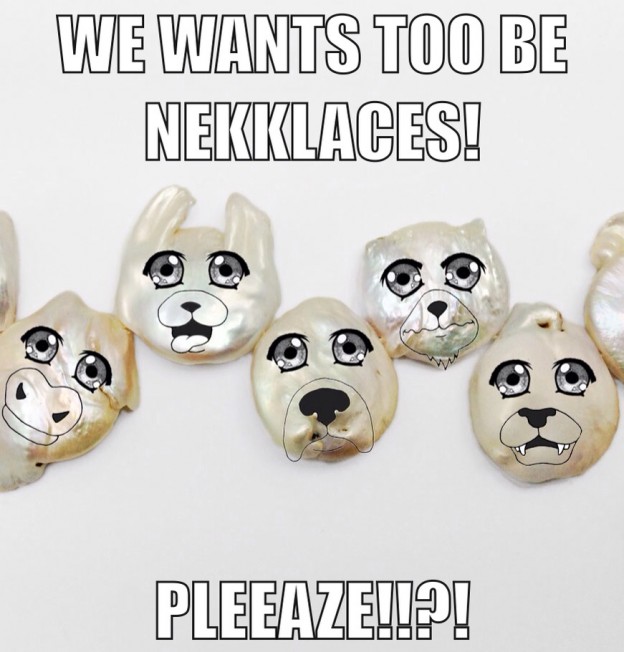Pearls develop inside the mantle tissue of pearl producing oysters and mussels—with each individual pearl being unique and having slightly different characteristics. Like other gemstones, pearls are valued based on commonly desired traits like size, cleanness, and shape. However, unlike diamonds and most colored stones, pearls do not have any standard criteria for grading these characteristics and even experienced buyers can encounter trouble navigating the huge range of colors, shapes and qualities available on the market.
Drilled pearls are usually grouped together on strands with other pearls of similar size, shape, and quality. It is expected that the pearls on each strand will have some variation in each of these categories. Our goal in this article is to make shopping for strands of pearls easier by shedding light on the qualities that make pearls special.
Pearl Sizing:
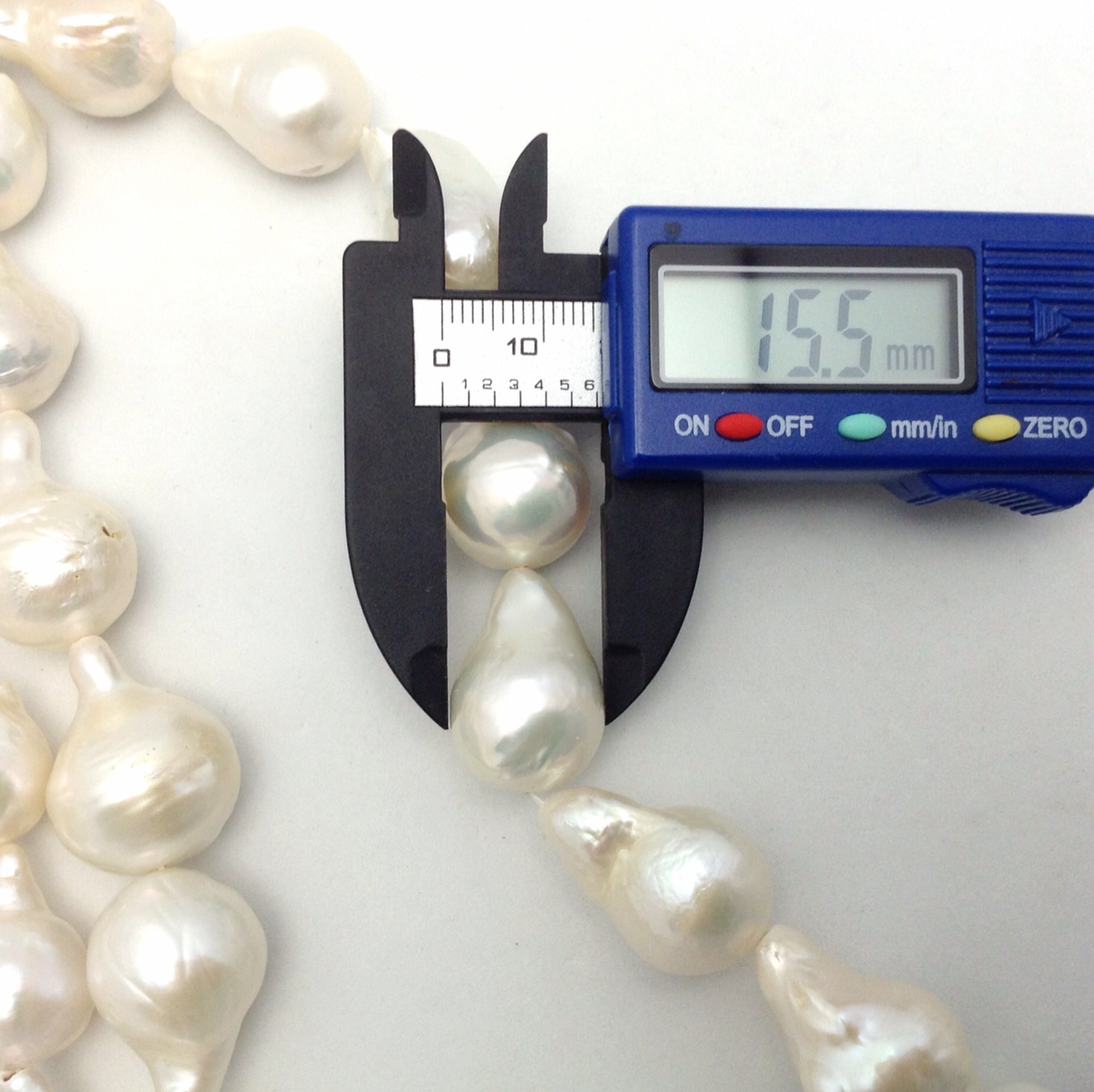
Pearls are generally measured in millimeters at its largest points perpendicular to the direction of its holes. Pearl strands almost always have a size range that describes the width of its smallest and largest pearl on the string. The difference in size on each individual strand depends on the shape and size of pearls, but generally ranges from about 0.5mm with pearls under 6mm to 3mm or more with large pearls 12mm and up. An example would be 5.5mm-6.0mm Round White Freshwater Pearls or 14mm-16mm Baroque Freshwater Pearls. This is straightforward for round, semi-round, and rice shaped pearls, but can get a little bit fuzzy for other shapes like free-form baroque or keshi pearls.
How to Judge Pearl Quality:
Size is certainly important for determining which pearls will fit your design ideas and fall within your price range, but size is not everything! In many cases, pearl quality can be more important to how your finished piece will look and can be the difference between profit and loss when putting your designs on sale. Unlike size which can be measured definitively with a caliper, the characteristics that determine quality are subjective and not standardized. We will go over a few of the important traits in detail to provide a better understanding of what is necessary for specific designs and how to look for it.
Pearl Luster and Nacre:
Nacre is a highly reflective material that exhibits a unique quality in pearls known as luster. The characteristic glow that pearls display is a result of light being bent and reflected through microscopic layers of nacre near the pearl surface. Nacre (pronounced nay-ker) is the pearl producing material that oysters secrete to cover foreign particles within its shell. Luster describes the reflective brilliance that a pearl exhibits, usually in direct correlation to the thickness of the nacre.
Luster is arguably the most important quality determining trait because it is the unique property which gives the distinctive shiny finish that pearls are known for. High luster pearls are much more desirable because they shine and reflect light in a manner that cannot be found in other gemstones or materials. Low luster pearls on the other hand appear less reflective and brilliant and are therefore much less desirable.
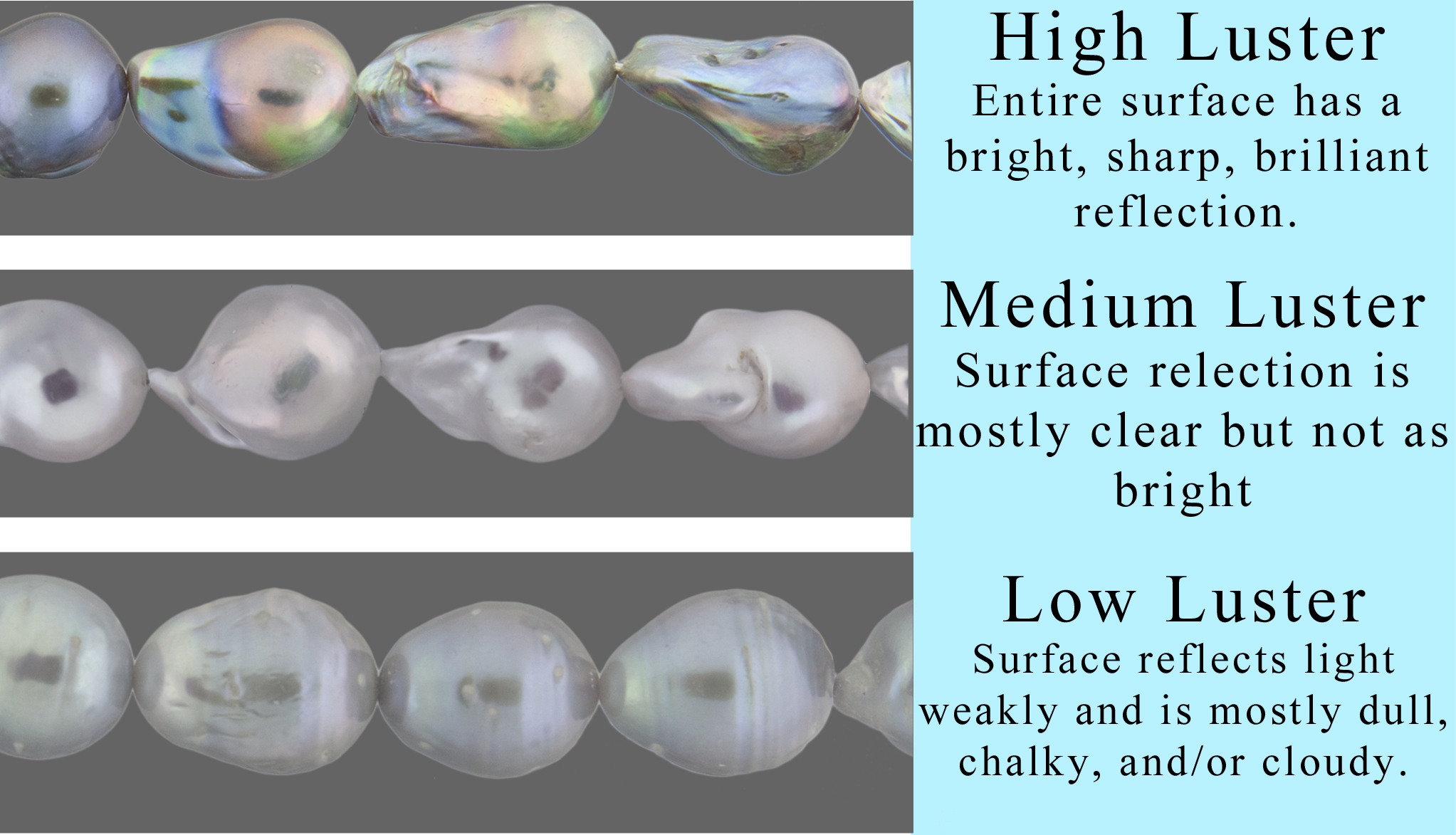
There are commonly used terms within the industry to describe a pearl’s luster but no standard way to measure or quantify it. “AAA”, “top quality”, and “best” are all common ways to describe the most brilliant pearl specimens but even these terms admittedly have little definitive meaning because they do not have any point of comparison. One vendor may say that a pearl strand has “AAA” luster, but another could disagree. The best way to gain an understanding of luster quality is simply to see as many pearls as possible close up in real life. If you don’t have many pearls accessible to you, a good alternative is to use a few loose pearls as a guide. For the best luster, Keshi pearls are a great reference because they are 100% nacre and generally have the highest luster of all pearls on the market. Pearls from different pieces of jewelry will almost always have slightly different levels of luster that you can use to compare and develop an understanding for yourself.
Cleanness:
Another important consideration when selecting pearls is how much blemishing is on the surface. From small indentations, to lines, rings, cracks and clouds, pearl imperfections come in a variety of shapes and sizes like the pearls themselves. Blemishes may appear only on one face of the pearl or may be visible from all sides as well as at a distance.
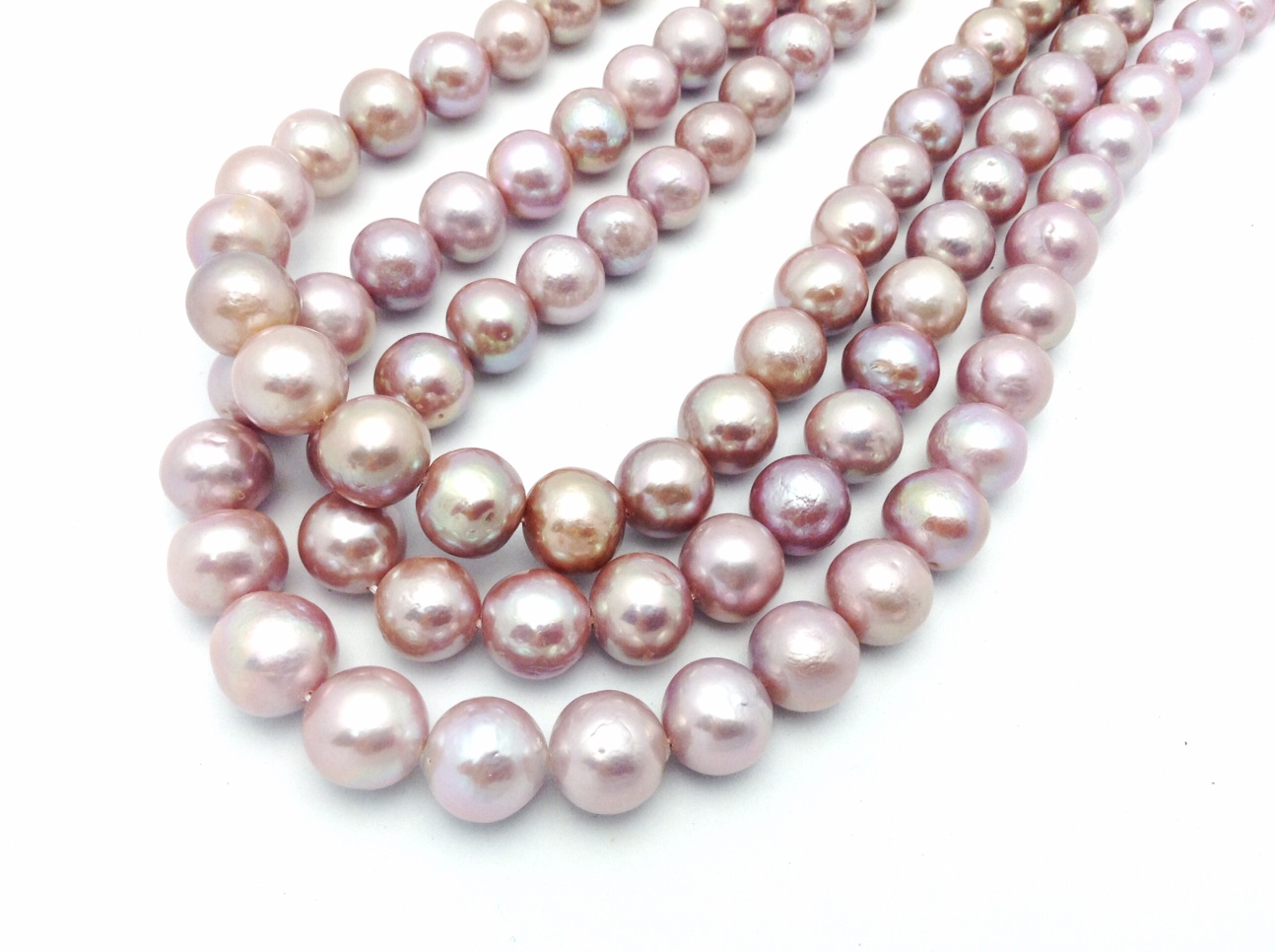
From a design and selling standpoint, imperfections are not necessarily your enemy—they can be a great opportunity to lower the cost of your materials if it will not significantly lower the appearance of your finished pieces! Imperfections can be concealed on certain designs, utilized in the design itself, or may not matter at all if the blemishes are small and not prevalent. Experienced jewelry designers can recognize situations where it is possible to use slightly blemished materials to keep prices down without compromising the integrity of the piece. Saving money where possible is an art in itself.
Pearls that are used as pendants or on stud earrings usually do not have more than one blemish because the pearls are typically the focal points of those designs. Strands with this high standard of cleanness are rare and priced at a premium, but the good news is that most pearl jewelry does not require flawless pearls to look stunning! Small blemishes are usually not noticeable except under close inspection, and if the pearls have high luster or are incorporated into a special design, it is even easier to overlook.
Uniformity:
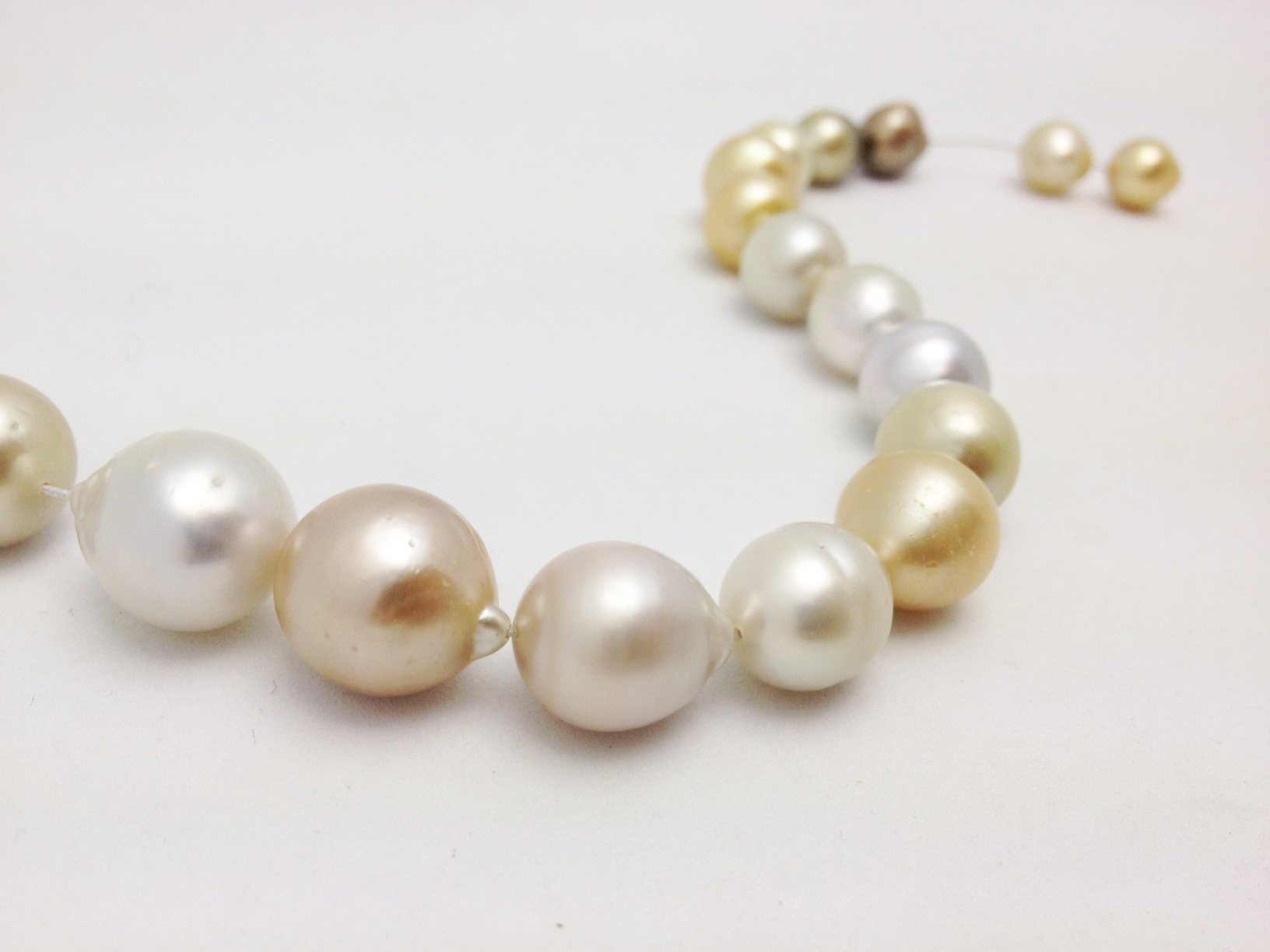
Uniformity is a very easy quality to overlook but incredibly important for some designs and shapes. A prime example is round pearls which are priced in large part according to how well their shapes are matched to each other. Lopsided or off-round pearls will stick-out from a group of round pearls and lower the price of the entire strand. Every pearl on a strand is matched as close as possible to the others, but it is obviously very difficult to find perfect matches because each pearl is unique.
Inspect pearls strands at a few distances to determine how uniform the individual beads are. If the pearls are a very near match or identical from a distance, then you can inspect them closer by laying them flat on a table and rotating them back and forth which makes the three dimensional differences more obvious. Unless you have a strand full of perfectly round pearls, you will notice subtle differences between the beads as they rotate and you will have a better idea of how well the shapes match each other.
To sum things up…
It is a great time to be a pearl enthusiast because of the huge selection pearls on the market and hopefully this article has made you better equipped to choose between all the different shapes, sizes and qualities out there. For each of your pearl jewelry designs, use the guidelines we discussed to map out the basic elements that will make the finished piece work. You may find that more than one type of pearl will work for your projects and this is where the artistic aspect of jewelry design lies. As the designer, you will need to use your artistic vision to create the best arrangement available to you. The sheer range of choices in combination with its timeless elegance and constantly evolving jewelry applications make pearls some of the fascinating pieces to your in your jewelry design puzzle.
-Cyrus Nemani, Gempacked

